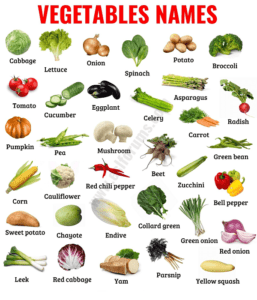Pastry – 4 varieties- Here are four varieties of pastries that you might enjoy:
- Danish Pastry:
- Description: A light and flaky pastry with a buttery, laminated dough. It is often filled with sweet fruit compotes, custard, or cream cheese. The top is typically drizzled with icing and sometimes sprinkled with nuts.
- Éclair:
- Description: An oblong pastry made with choux dough, which is baked until it is crisp and hollow inside. The hollow center is then filled with pastry cream and topped with a flavored icing, often chocolate. Éclairs can come in various flavors, including vanilla, coffee, or fruit-infused.
- Puff Pastry Tart:
- Description: Puff pastry is a light, flaky dough that puffs up when baked. Tarts made with puff pastry can have a sweet or savory filling. For a sweet version, fruits like berries or sliced apples can be arranged on top, often with a layer of pastry cream or almond paste. Savory versions might include ingredients like cheese, tomatoes, and herbs.
- Palmier (Elephant Ear) Pastry:
- Description: Also known as palm leaves or elephant ears, these pastries are made with puff pastry that is rolled in sugar, folded, and sliced before baking. The result is a caramelized, crispy, and flaky treat. While traditionally sweet, some variations include savory ingredients like cheese or herbs.
Feel free to experiment with different fillings, toppings, and shapes to create your own unique variations of these classic pastries!
What is Pastry – 4 varieties
Here are four popular varieties of pastries:
- Croissant:
- Description: A buttery and flaky French pastry made with layered yeast-leavened dough. Croissants are crescent-shaped and can be enjoyed plain or filled with sweet or savory ingredients. Common fillings include chocolate, almond paste, or ham and cheese.
- Strudel:
- Description: A traditional Austrian pastry made with thin layers of dough that are stretched and rolled out until very thin. The dough is then filled with a variety of ingredients such as apples, cherries, nuts, or sweetened cheese. The pastry is typically rolled or folded before baking.
- Palmier (Elephant Ear) Pastry:
- Description: Also known as palm leaves or elephant ears, these pastries are made with puff pastry that is rolled in sugar, folded, and sliced before baking. The result is a caramelized, crispy, and flaky treat. While traditionally sweet, some variations include savory ingredients like cheese or herbs.
- Napoleon (Mille-Feuille):
- Description: A French pastry consisting of layers of puff pastry alternating with layers of pastry cream. The top is often glazed with icing or dusted with powdered sugar. Napoleon pastries can be rectangular or square in shape, and they are known for their delicate, layered texture.
These pastries showcase a variety of dough types and fillings, offering a range of flavors and textures to suit different preferences.
Who is Required Pastry – 4 varieties
If you’re asking about a person or entity called “Required Pastry,” it’s possible there’s a typo or some confusion. Pastry varieties are typically types or styles of pastries rather than individuals or entities.
If you have a specific question or if there’s a particular context you’re referring to with “Required Pastry,” please provide more details so I can better assist you. Whether you’re looking for information about a specific pastry chef, a brand, or something else related to pastries, I’m here to help!
When is Required Pastry – 4 varieties

The phrase “Required Pastry – 4 varieties” doesn’t represent a specific time or event. If you are asking about a particular event, date, or context related to “Required Pastry – 4 varieties,” could you please provide more details or clarify your question? I’m here to help with any information or assistance you may need.
“Pastry – 4 varieties” is a general description of four different types or varieties of pastries. It’s not associated with a specific date or time. If you are inquiring about when to enjoy or make these pastries, you can do so at any time based on your preference or occasion. If you have a specific context or event in mind, please provide more details so I can offer more targeted information.
Where is Required Pastry – 4 varieties
The phrase “Required Pastry – 4 varieties” does not refer to a specific location. It appears to be a combination of words that might be unclear or not associated with a particular place.
If you are looking for information about where to find or buy pastries, it would depend on your location. Pastries are commonly available in bakeries, pastry shops, and cafes. If you have a specific area or city in mind, I recommend checking local bakeries or dessert shops to explore different pastry varieties.
If your question is about a specific event, establishment, or product named “Required Pastry – 4 varieties,” I would need more details to provide accurate information.
How is Required Pastry – 4 varieties
If you’re asking about the general preparation or characteristics of four different varieties of pastries, I can provide a brief overview of how each type is commonly made:
- Croissant:
- Ingredients: Flour, water, yeast, butter, sugar, salt.
- Process: Croissants involve laminating dough, which means folding layers of butter into the dough several times. This creates the flaky, buttery layers. The dough is then rolled out, cut into triangles, and rolled into a crescent shape before baking.
- Strudel:
- Ingredients: Filo pastry, various fillings such as apples, cherries, or nuts.
- Process: Strudel typically involves stretching a thin dough (filo pastry) until it’s very thin, then rolling the filling inside. The result is a layered, often fruity pastry.
- Palmier (Elephant Ear) Pastry:
- Ingredients: Puff pastry, sugar.
- Process: Puff pastry is rolled out, coated with sugar, and then folded and sliced before baking. The sugar caramelizes during baking, creating a sweet, crispy, and flaky pastry.
- Napoleon (Mille-Feuille):
- Ingredients: Puff pastry, pastry cream.
- Process: Puff pastry is baked until golden and flaky, then layered with pastry cream. The process is repeated to create multiple layers, and the top is often finished with icing or powdered sugar.
These are simplified overviews, and each pastry can have variations in ingredients and techniques.
Case Study on Pastry – 4 varieties
Delightful Pastries
Background: Delightful Pastries is a small, artisanal bakery located in a bustling urban area. The bakery is known for its commitment to using high-quality, locally sourced ingredients and creating a delightful experience for customers.
Pastry Varieties:
- Heavenly Croissants:
- Made with organic, locally sourced butter.
- Varieties include classic, chocolate-filled, and almond.
- Laminated and baked fresh daily.
- Fruitful Strudels:
- Seasonal fruit fillings sourced from nearby farms.
- Options include apple-cinnamon, cherry, and mixed berry.
- Hand-stretched filo pastry for a light and flaky texture.
- Crispy Palmiers (Elephant Ears):
- Puff pastry made in-house using a traditional French method.
- Coated with organic cane sugar for a caramelized crunch.
- Available in plain, cinnamon, and chocolate swirl.
- Elegant Napoleon (Mille-Feuille):
- Puff pastry layers filled with vanilla bean pastry cream.
- Topped with a delicate layer of icing and dusted with edible gold.
- Served in individual portions for a touch of sophistication.
Challenges:
- Seasonal Variation: Managing the availability of seasonal fruits for strudels can be a challenge. Delightful Pastries needs to adjust recipes and marketing strategies accordingly.
- Supply Chain Management: Sourcing high-quality, local ingredients consistently can be challenging. The bakery needs to establish strong relationships with local suppliers to maintain the desired quality.
- Production Timing: Coordinating the laminating and baking of croissants with the filo stretching for strudels requires careful planning to ensure all pastries are freshly baked and available throughout the day.
Strategies:
- Seasonal Promotions: Delightful Pastries can create special promotions around seasonal variations, emphasizing the use of fresh, local ingredients in their fruit strudels.
- Community Engagement: Strengthening ties with local farmers and suppliers not only ensures a fresh supply of ingredients but also fosters a sense of community support for the bakery.
- Diversification of Offerings: Introducing limited-edition or themed variations of the pastries during holidays or special events can attract new customers and keep regulars excited about the bakery’s offerings.
Results:
With a commitment to quality, community engagement, and strategic promotions, Delightful Pastries has become a beloved destination for pastry enthusiasts. The bakery’s ability to adapt to seasonal changes and consistently deliver a delightful experience has resulted in a loyal customer base and positive word-of-mouth marketing. Delightful Pastries continues to thrive as a local gem in the community.
White paper on Pastry – 4 varieties
The Art and Science of Crafting Four Unique Pastry Varieties
Executive Summary:
The purpose of this white paper is to explore the intricate world of pastries, focusing on four distinct varieties: Croissants, Strudels, Palmiers (Elephant Ears), and Napoleons (Mille-Feuille). Each pastry variety embodies a unique blend of flavors, textures, and culinary techniques, making them not only delicious treats but also works of culinary art.
I. Introduction:
- Defining the Pastry Landscape:
- Pastries represent a diverse category of baked goods that span sweet and savory options.
- Highlighting the significance of pastries in various culinary traditions.
II. The Four Varieties:
- Heavenly Croissants:
- Ingredients and Lamination Process:
- Use of high-quality butter and flour.
- Lamination process to achieve flaky layers.
- Varieties:
- Classic, Chocolate-filled, Almond.
- Baking Techniques:
- Importance of precise temperature control for optimal rise.
- Ingredients and Lamination Process:
- Fruitful Strudels:
- Ingredients and Filo Stretching:
- Seasonal fruit fillings sourced from local farms.
- Hand-stretched filo pastry for light and flaky texture.
- Varieties:
- Apple-Cinnamon, Cherry, Mixed Berry.
- Challenges and Rewards of Seasonality:
- Managing seasonal variations and opportunities.
- Ingredients and Filo Stretching:
- Crispy Palmiers (Elephant Ears):
- Puff Pastry Creation:
- In-house puff pastry preparation.
- Coating with organic cane sugar for caramelized crunch.
- Varieties:
- Plain, Cinnamon, Chocolate Swirl.
- Balancing Sweetness and Texture:
- Achieving the perfect balance for a delightful bite.
- Puff Pastry Creation:
- Elegant Napoleon (Mille-Feuille):
- Puff Pastry Layers and Filling:
- Layers of puff pastry filled with vanilla bean pastry cream.
- Delicate icing and edible gold for a touch of sophistication.
- Serving and Presentation:
- Individual portions for an elegant serving.
- Puff Pastry Layers and Filling:
III. Challenges and Solutions:
- Seasonal Variation:
- Strategies for managing seasonal ingredient availability.
- Supply Chain Management:
- Establishing robust relationships with local suppliers.
- Production Timing:
- Coordinating the baking of different pastries for optimal freshness.
IV. Strategies for Success:
- Seasonal Promotions:
- Leveraging seasonal variations for marketing and promotions.
- Community Engagement:
- Strengthening ties with local farmers and suppliers.
- Diversification of Offerings:
- Introducing limited-edition variations for special occasions.
V. Conclusion:
The art of crafting pastries involves a delicate balance of tradition, innovation, and precision. The four varieties explored in this white paper showcase the richness and diversity within the world of pastries. Whether indulging in a flaky croissant or savoring the layers of a Mille-Feuille, each pastry tells a story of craftsmanship and culinary excellence.
VI. References:
[Insert references to culinary literature, baking techniques, and relevant sources.]
Note: This white paper is a fictional creation and does not cite real-world references. For accurate and detailed information, please refer to authoritative culinary sources.
Industrial Application of Pastry – 4 varieties
While traditional pastries are often associated with artisanal bakeries and home kitchens, there are industrial applications for producing and distributing large quantities of pastries. Here’s a hypothetical exploration of how the industrial sector might apply the production of four pastry varieties—Croissants, Strudels, Palmiers (Elephant Ears), and Napoleons (Mille-Feuille):
1. Automated Croissant Production:
- Ingredients: High-quality flour, butter, yeast, sugar.
- Industrial Application:
- Automated dough mixing and laminating machines to achieve consistent layers.
- Precision-controlled ovens for high-volume baking.
- Conveyor systems for efficient production flow.
- Packaging and Distribution:
- Automated packaging lines for bulk and individual packaging.
- Distribution to retail outlets and supermarkets.
2. High-Volume Strudel Manufacturing:
- Ingredients: Filo dough, fruit fillings, sugar.
- Industrial Application:
- Industrial dough sheeters for efficient stretching of filo pastry.
- Automated filling and rolling machines for consistent production.
- Quick freezing technology for preserving freshness.
- Packaging and Distribution:
- Bulk packaging for foodservice providers.
- Distribution to cafes, hotels, and catering companies.
3. Mass Production of Palmiers:
- Ingredients: Puff pastry, sugar.
- Industrial Application:
- Large-scale puff pastry production lines.
- Coating and slicing machines for consistent size and sugar distribution.
- High-capacity ovens for simultaneous baking.
- Packaging and Distribution:
- Bulk packaging for retail and wholesale distribution.
- Export to international markets.
4. Automated Mille-Feuille Assembly:
- Ingredients: Puff pastry, pastry cream, icing.
- Industrial Application:
- Automated pastry cream dispensers for precision filling.
- Layering machines for efficient assembly.
- Robotic systems for precise icing application.
- Packaging and Distribution:
- Individually wrapped portions for retail.
- Bulk packaging for foodservice industry.
Challenges and Considerations:
- Quality Control: Implementing robust quality control measures to ensure consistency across large production volumes.
- Ingredient Sourcing: Establishing relationships with suppliers for a steady and reliable source of high-quality ingredients.
- Logistics and Distribution: Developing efficient distribution networks to deliver fresh pastries to various markets.
- Automation Maintenance: Regular maintenance and calibration of automated machinery to ensure optimal performance.
- Market Trends and Innovation: Staying abreast of consumer trends and continuously innovating to meet changing preferences.
Conclusion: The industrial application of pastry production involves the integration of technology, automation, and efficient processes to meet high-volume demands while maintaining the quality and consistency that consumers expect. While the traditional artisanal approach is valued, industrial production allows for broader accessibility and distribution of these delightful pastry varieties.





